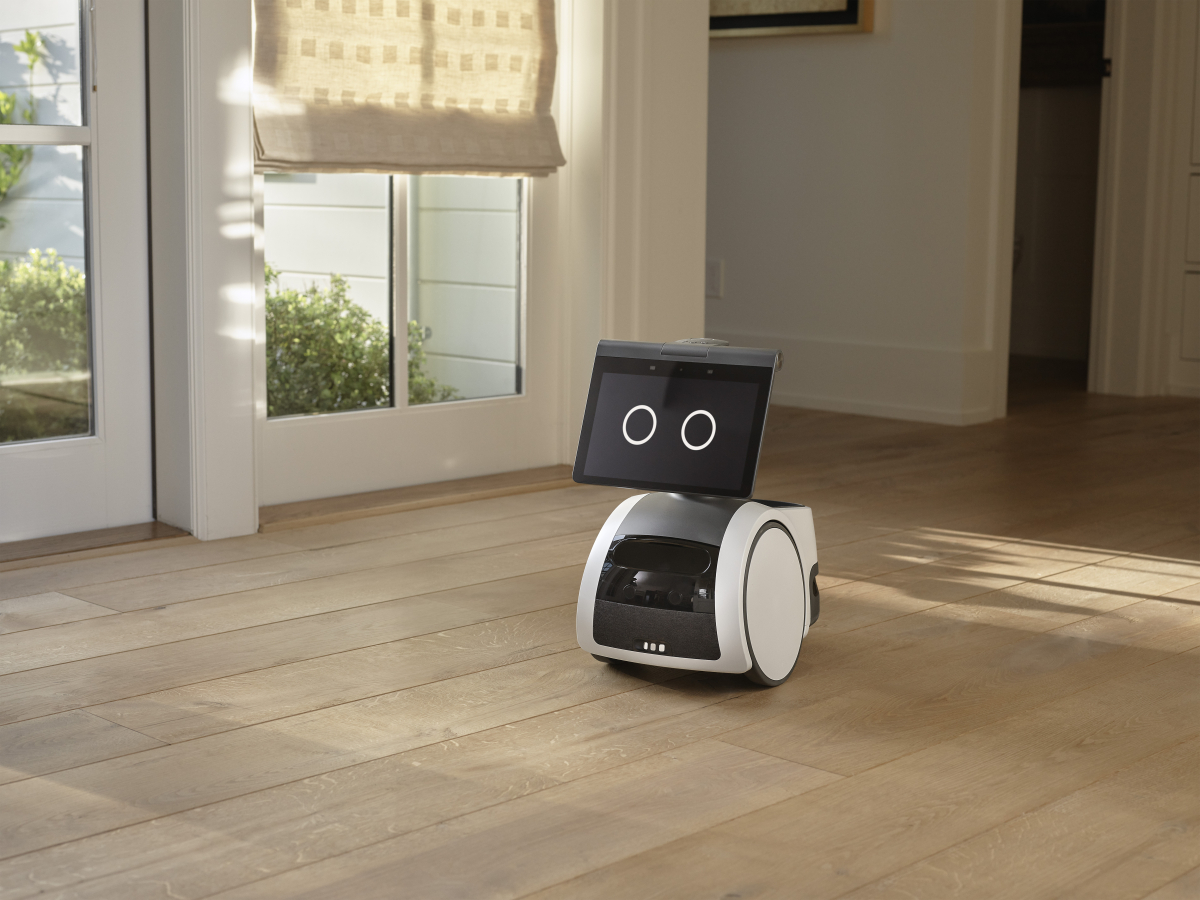Amazon brings cute home robots for $ 1,000
A display with a face, squeaky tones as feedback, looks like a tall Roomba, but functions like a big one. This is Amazon’s new home robot Astro.
Amazon wants to get started. Get started and walk the path to a future in which home robots are a regular part of every home furnishing. It starts with the little astro, which is basically not much more than a moving surveillance camera, but has a lot of potential.
Contents
Vacuum robots on steroids: Astro rolls through the booth
Astro is an AI robot for your own home. However, one that is not particularly hectic. Because Astro is quite small and could quickly fall by the wayside with a lively lifestyle with a few children and a large house. Wherever Astro fits, however, it can give an idea of what might be possible in the future.
Astro in its current iteration is less of a robot than a computer on wheels. Above all, he should take on tasks such as monitoring the house and also help in maintaining contact with the family, especially in maintaining the connection with the elderly.
Astro combines advances in artificial intelligence, computer vision, sensor technology, and voice and edge computing in a package that its makers want it to be helpful and practical. They have given Astro various skills for this purpose.
For example, Astro can move around the house completely independently. He can specifically check certain areas and send camera images from any desired location to the Astro app. It is able to recognize authorized persons and otherwise sound the alarm. With an integrated periscope camera, Astro provides a panoramic view or can look at surfaces that it could not reach itself. For example, you can check whether the stove is off. With its sound detection, Astro can also detect the sound of a smoke or carbon monoxide alarm or the breaking of glass.
Astro is designed to help care for the elderly. (Image: Amazon)
Astro is also designed to help people who need to remotely look after elderly relatives and loved ones. Astro is installed with the relatives, where it can remind them of important things such as taking medication during the day. Two-way communication is also possible, with Astro’s screen showing the video call. Astro can be integrated as a helper for emergency situations via the “Alexa Together” virtual emergency call center.
The little robot can also function as part of a ring safety system. With Ring Protect Pro, a new subscription service from Ring, Astro can be set to independently monitor the home. In that case, Astro would even proactively investigate if it detects an unusual event. It would automatically store videos in the Ring Cloud.
Astro can also be used for entertainment purposes in a very mundane way. The little robot can follow its people from room to room and play their favorite programs, podcasts or music. Astro is even able to actively search and find its people, for example to convey the message to them that a timer has expired. Astro can also be used to make calls via Alexa, whereby Astro acts like a mobile phone that follows its human being during the call.

But the little robot is also suitable for making phone calls. (Image: Amazon)
Its inventors tried to give Astro a kind of personality. Astro communicates with its digital eyes on the rotating screen, with body movements and unmistakable and recognizable tones. His personality is constantly learning. After a while, Astro knows where to be in order to be particularly helpful quickly. It can also be used as a messenger to let the family know that the meal is ready. Astro’s personality is designed to evoke emotions such as empathy when people use the device.
On the engineering side, Amazon faced scientific challenges building Astro. According to Amazon manager Charlie Tritschler, the most important of these was the question of how to ensure that Astro can move around the house autonomously. From this they developed “Intelligent Motion”. This mobility-giving technology to Astro takes advantage of advances in Simultaneous Location and Mapping (SLAM) to help Astro understand where it is and autonomously navigate dynamic home environments.
His onboard systems allow him to adjust the course in real time and thus react to objects that suddenly appear on the ground – such as the family dog. A new computer vision feature called Visual ID allows Astro to recognize the people in his household.
To ensure data security, Astro is designed from the start so that it does most of the data processing on the device itself, without any cloud contacts. This applies above all to images and raw sensor data that it processes while moving around the house. This helps Astro react quickly to its surroundings.
The visual ID that Astro uses to recognize its people is also stored on the device. In addition, it is possible to basically lock Astro out of certain areas of the house. Astro even reacts by leaving the area if it is manually placed in it.
If you don’t want Astro to listen and watch all the time, you can switch off the microphones and cameras on the little robot with a button. Astro doesn’t move anymore. If he processes data in the cloud, Astro makes this transparent by signaling it via an LED strip on top of his periscope camera. Like Alexa, Astro also reacts to a wake-up word.
Interested parties can buy a special edition for $ 1,000 – with luck
During its development, Astro has gone through hundreds of thousands of hours of in-house testing with Amazon employees – both in offices and in their homes. But because Amazon is certain that far more experience from far more apartments is required to make Astro the most useful home robot, Astro is being offered to a limited group of customers for purchase as part of the “Day 1 Editions”. Starting today, customers interested in Astro can sign up to receive an invitation as soon as the device is ready to ship.
As a finished product, Astro is said to cost around $ 1,450, but as part of the Day 1 edition, the robot will be offered at an introductory price of around $ 1,000. The first invitations should be sent out this year. However, the campaign is limited to participants from the USA.



